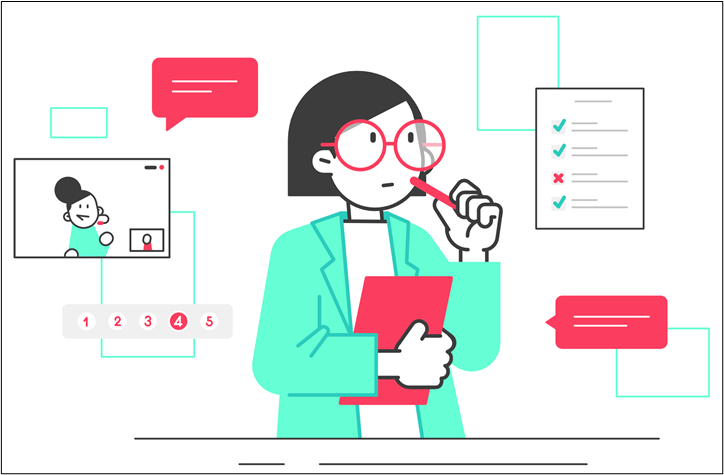Week 6 Overview: Assess
Introduction

This step is traditionally referred to as “Test” or “Implement,” but our project constraints mean that we most likely won’t be able to test our designs with real “users.” In thinking back to Natasha Jen’s talk addressing absence of critique in the design thinking process, these constraints also illuminate an opportunity for us to take time and critique our work internally before putting it in front of test users.
Course Competencies
- Develop a strong understanding of the design thinking process and how it can be applied in a variety of industry settings.
- Understand the terminology and conceptual models used in design disciplines.
- Recognize the ethical and social dilemmas and obligations of the practice of design.
- Diagnose common adoption barriers in individuals, groups and organizations.
- Participate in and lead innovation in creative and collaborative settings.
- Undertake complex and unstructured problem-solving challenges in unfamiliar domains.
- Identify the necessary skill sets and mindset to practice design thinking.
- Utilize a human-centered approach to research to understand and tackle complex social problems and build empathy for target audiences.
- Create prototypes and/or proof of concepts for user testing.
- Develop and test innovative ideas through a rapid iteration cycle.
Learning Objectives
- Practice collaboration.
- Practice professional work presentation.
- Listen actively and critically evaluate presented ideas.
- Offer constructive feedback to peers and perform constructive self-assessment.
- Become familiar with different types of design deliverables typically used in professional contexts.
To-Do List: (in sequential order)
- Assignment:
- Final Presentation
- Feedback Grids
- Retrospective
- Discussion Board:
- Weekly Progress Report
Sources
Jen, N. (2020, April 23). Natasha Jen: Design Thinking Is Bullsh*t. Adobe 99U. https://99u.adobe.com/videos/55967/natasha-jen-design-thinking-is-bullshit.